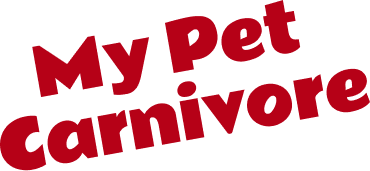
Thinking about switching your pet to a raw diet? You're in the right place! Raw feeding is a great way to give your furry friend a diet that's closer to what nature intended. This beginner's guide will cover everything you need to know to make the transition smooth and easy. We'll explore the basics of raw feeding, what goes into a balanced raw meal, and helpful tips for getting started.
The Main Components of a Raw Diet
1. Meat:
Meat serves as the primary source of nutrients in a raw diet, providing essential amino acids that are crucial for your pet's overall health.
2. Bones:
Bones are an excellent source of minerals and help to firm up stool. However, too much bone can lead to constipation. Bones such as poultry necks, femur bones, and poultry feet also help keep your pet's teeth clean.
3. Organs:
Organs are like a multivitamin for carnivores, packed with essential nutrients. However, feeding too many organs can result in loose stool.
Raw Feeding Options
We do offer a wide range of products for homemade raw feeding to thaw, scoop, & serve options. If you want to take the easiest route, then any of our "whole ground" or "PMR" options already contain meat, bone, & organ all ground together. So, you don't have to worry about that. We offer coarse grinds & fine grinds. So, if you have a puppy, kitten, smaller carnivore, or pet with poor dental health then the fine grind is likely your best option. Larger cats & dogs do well with the coarse grind.
One of the other things to keep in mind with fresh feeding is that you want to feed a variety of different proteins each week. This is because each protein has slightly different nutrients. So, the more variety you offer, the fuller the nutrient profile over time. Aiming for at least 4 different protein per week is a great place to start! But if you can do more that is even better!
Coarse vs. Fine Grinds:
Choose coarse grinds for larger dogs and fine grinds for smaller pets like puppies, kittens, or pets with dental issues.
Feeding Guidelines
Daily Feeding Amounts:
- Adult Dogs and Cats: Feed 2-3% of your pet's body weight daily. Adjust based on activity level and weight goals.
- Puppies and Kittens: Feed 4-6% of their body weight daily, as they require more nutrients for growth.
Meal Frequency:
You can split the daily amount into as many meals as you prefer.
Here’s how to make the transition smoothly
Younger Animals Transition Easier
For younger pets, switching to raw food is often simple—just do it cold turkey. Offer them a raw meal, and they’ll usually take to it quickly.
Older Pets Need a Slower Transition
Older pets or those with sensitive stomachs benefit from a gradual change. Start by replacing 10% of their regular food with raw food, like Green Tripe or Raw Goat Milk, for a few days. Watch their stool for any changes. If everything looks normal, move to a 25% raw and 75% regular food mix. Gradually increase the raw portion to 50%, then 75%, and finally, 100%, waiting for their stool to stabilize at each step.
During the transition, you’ll notice their stool becoming smaller and firmer—this is perfectly normal.
Top Products for Newcomers to Raw Feeding
Recommended Proteins:
- Chicken: Affordable and familiar.
- Beef: A rich source of nutrients.
- Turkey: Gentle on the stomach, great for beginners.
- Pork: Another economical and nutritious option.
Additional Supplements:
- Raw Goat Milk: Easy to digest and beneficial for gut health, particularly during the transition to raw feeding.
- Sardines: High in omega-3 fatty acids, sardines can help offset inflammation caused by kibble and canned foods.
Conclusion and Encouragement
Starting your pet on a raw diet may seem daunting at first, but with the right guidance and products, it can be a smooth transition. Begin with the recommended proteins, and once comfortable, explore more variety to keep your pet's diet exciting and nutritious.


